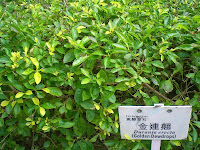I have been trying to learn a little bit about the history of Oaxaca, and Mexico generally, while I am here - and it's really confusing. I would like to blame the US education system, but it's much more likely that I was not paying attention when we covered Mexican History.
So, here is my "Cliffs Notes" version:
Archaic Period (30,000 BC - 1500 BC) the first human hunter-gatherers came from Asia across a land bridge to Alaska. Sarah Palin would have seen them coming from her kitchen window.
 |
| Olmec stone head. |
Pre-classic Period (1500 BC - 200 AD) the Olmecs, the mother-culture of all of meso-american cultures, appeared in Veracruz, the state to the north of Oaxaca. The Olmecs invented agriculture, towns, pyramids, calendars and human sacrifice (I guess no society is perfect). In the Oaxaca Valley, the Zapatecs basically copied everything the Olmecs did.
 |
| Zapotec bat-god urn |
Classic Period (200 AD - 900 AD)- the Zapotecs set up their headquarters at Monte Alban (and left spectacular ruins, a "must see" when you visit Oaxaca), with a commanding view (literally) of the Oaxaca Valley. Being an agriculture-based society, all of their gods were all about sustenance and fertility, and the priests pretty much ran the show.
 |
| Zapotec jade war mask |
Post-classic Period (900 AD - 1521 AD) - As population pressures increased, war with the Mixtecs from the north brought new gods of war and victory, and the priest leaders were replaced by military leaders. The Zapotec peasants paid "tribute" (in-kind taxes) to finance the wars. Around 1350 the Aztecs (AKA Mexicas, from modern Mexico City) took control of the valley. They used Zapotec puppet leaders to collect and forward the tribute, and occasionally made an example of a town by sacking it.
 |
| Conquistador and Aztec |
Colonial Period (1521- 1821) The Spanish, having beaten the Aztecs in Mexico City in 1519, took a couple of years to reach the Oaxaca Valley (fun fact: the Spanish word for Columbus is "Colón", which is NOT where we got our term "Colonial"). When the Spanish arrived in "Guaxaca" (Oaxaca), they assumed the top of the food chain, replacing the Aztecs in receiving tribute. The Zapotec religion was very similar to Catholicism, so the transition was not too hard - it was just a matter of replacing the Zapotec gods with the Catholic saints, and all the rest was detail.
 |
| Hidalgo, Father of Mexico |
Independence (1821 - 1858) Hidalgo, Morelos and Guerrero led the rebellion against Spain starting around 1810. Spain finally gave up control in 1821, ending 300 years of occupation, and leaving behind them a hugh power vacuum ultimately resulting in the Second Mexican Empire (meet the new boss, same as the old boss), the rule of the military despot Santa Anna, and the Mexican American War (in 1845 our President James Polk offered Mexico forgiveness of $25 million in loans in exchange for the Texas Territory. When Mexico declined the offer, the US invaded, taking from Mexico two thirds of its territory, including Texas, New Mexico, Arizona and California. Fun fact: remember the Alamo? Well the Mexicans have their own mirror-image story about the Niños Héroes who defended the Chapultepec castle to their deaths as US forces invaded Mexico City to end the war).
 |
| President Benito Juarez |
La Reforma (1858 - 1876) - Benito Juarez, a liberal Zapotec, led the country in "La Reforma" from 1858 until his death in 1872. Juarez struggled to hold power against internal and external enemies, but implemented many liberal reforms, some of which backfired. In 1861 Juarez had suspended interest payments to Mexico's foreign creditors, which resulted in an interruption of Juarez's term as president in 1864 by the Second French Intervention in Mexico which resulted in the Second Mexican Empire
(1864-1867). Napoleon III of France invaded while the US was otherwise occupied with the their own Civil War. Once the US war was resolved the newly coined Monroe Doctrine was used to justify pressuring France into withdrawal. Juarez was restored to power and La Reforma continued until the death of Juarez, and a few years beyond under his vice president, Lerdo.
 |
| Porfirio Diaz |
Porfiriato (1876 - 1910) After the death of Juarez, Porfirio Diaz, half Zapotec and half Mixtec, took power in a coup. Diaz stabilized the country by doing things like eliminating elections, centralizing power, and repressing his opponents. The resulting peace encouraged foreign investment, resulting in great infrastructure improvements (communications, roads, railroads) and resumption of mining operations, but ultimately ignited the Mexican Revolution.
 |
| Poncho Villa |
Mexican Revolution (1910 - 1929) - Francisco Madero kicked off the Revolution in 1910 in reaction to the policies of Porfirio Diaz, but the more famous Poncho Villa and Emiliano Zapata began the long, bloody armed rebellion. In 1917, amid the Revolution, the current constitution was written generally favoring the poor and disenfranchised; restoring indigenous land rights privatized under the well-meaning Reforma legislation, nationalizing Mexico's oil and mineral reserves, and reining in the power of the Catholic Church. Although armed conflict ended in 1920, political chaos continued until the PRI (Institutional Revolution Party) took power in 1929 and began relaxing enforcement of the new constitution.
PRI Period (1929 - 1982) The Institutional Revolution Party won every election by overwhelming majorities using the strategy of only counting the votes they agreed with. This brought about stability at the cost of democracy.
Current Period (1982 - Present) Since I don't keep up with current affairs (and the book I got most of this from was written in 1977) you'll have to do the rest of the research yourself. But there are a couple of bits of modern Mexican history I would like to pass on.
- In 1992, President Carlos Salinas revoked article 26 of the constitution (which protected indigenous land rights) and signed the very unpopular NAFTA agreement (whereby the US can subsidize corn, but Mexico cannot). This ignited the Zapatista Revolt in Chiapas, Mexico because farmers who had made their living there growing corn for centuries could continue to grow corn, but could no longer make a living at it.
- Later in the 1990's the national telephone company was privatized, helping create the richest man in the world, Carlos Slim.
- Since 2006 Mexico has experienced an increase in the influence of the drug cartels, which are said to keep many people employed on their payroll, including many government officials.
- In 2014 nationalized oil and mineral rights are being opened up to private and foreign investment. What could go wrong?
 |
| Carlos Salinas |
 |
| Carlos Slim |
 |
| Zapatista musician |



























































